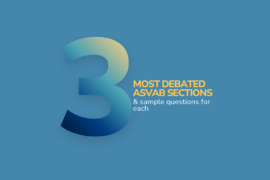The Dean Vaughn Total Retention System* is a program used to aid student’s memory and help them rapidly learn anything from Spanish to medical terminology. We know that a key component of college academic success is remembering what you have learned, so we set out to apply some of the memory techniques from the Dean Vaughn system to your everyday studying and learning.
We talked to Dean himself, as well as Rob Maddestra, National Sales Director of the Dean Vaughn Total Retention System, to understand how to use elements of the system on your own.
Start by paying attention the first time, no distractions
Paying attention the first time you learn material in class is something we all know we should do when learning the material the first time, but not something many students really practice. But Maddestra stressed that learning the material in its entirety the first time is more important than the actual studying you do later. In fact, he advised against studying as we think of it.
“If you’re going to review the lesson, review it in its entirety if at all possible and with no distractions. Shut off your cell phone, no notes, no phone calls, so that you can just totally engage,” said Maddestra.
We all get distracted by technology, so the best way to eliminate this is to simply remove it. Put your phone in another room. If using your computer, try a lockdown browser. Do whatever you can to keep yourself focused.
Audionyms and soundalikes
Vaughn said that the heart of the system is making illogical associations with what you want to remember.
“From a study standpoint, the key to remembering anything, is to change everything you want to remember into something you can see,” said Vaughn.
For example, if you are an English-speaker learning Spanish and want to remember the meaning of the Spanish word “sopa,” you would think of what this word sounds like. In this example, Maddestra used the English word “soap” as a soundalike. You would then connect this to the meaning of the Spanish word “sopa” which translates to “soup.” The visual then used to connect these two is an image of a bowl of soup with a bar of soap floating in the bowl. While it sounds strange, these audionyms are the key to remembering content.
“You take something that you know which is the keyword, whether its gas truck or doormat or an enter sign, we take something that’s common to you that you know, and we use that knowledge, that existing knowledge as a bridge to help you learn something you don’t know,” said Maddestra.
Illogical associations
The second aspect of this memorization technique comes from the illogical association you create between the two images.
“The first step is to change whatever you want to remember into something that you can see. The second step is to associate illogically what you can see with something you already know,” said Vaughn.
In the example of the bar of soap floating in the bowl of soup, it is easy to see how this is an illogical association. But Vaughn stressed the importance of these illogical associations as they stand out to you. He gave the example of an association you could make between a chicken and a horse. You can imagine a chicken riding a horse, but it would be more illogical and therefore easier to remember an image of a horse riding a chicken.
“The more illogical it is, the easier it is to remember,” said Vaughn.
The cube method
The audionyms and associations are the base of the Dean Vaughn system, but there are other methods to remember more information. One of these methods is the cube method. Maddestra explained how the system comes from the Method of Loci, which was used by the ancient Greeks and Romans. The Method of Loci used spatial memory to associate geographic locations with information, but Vaughn expanded on this.
“Rather than just go in and use geographical locations as a kickstarter to help you memorize things, what he did was he took one type of location which was any room with four corners, and then he assigned numbers to those locations which really improved the memory system,” said Maddestra.
When using this method, the dimensions of the room are numbered 0-9, With even numbers on the walls, odd numbers in the corners, zero being the ceiling, and nine being the floor. See below for visual reference:

This methodology is especially helpful when memorizing a sequence of information or numbered information. Then, you connect these locations in your familiar room to your audionyms and associations. Vaughn gave the example of the Periodic Table of Elements.
“Let’s suggest that you’re looking at carbon,” said Vaughn. He made an auditory association between the word “carbon” and “car”. “Then, if you’re looking into the cube, you would look at the right wall, which is number six, and you’d see a car bursting through at location six in one of your familiar rooms. That gives you the atomic number of carbon.”
Applying these methods to your everyday learning
When it comes to applying these associations, audionyms, and the numbered cube method to your everyday learning, the best way is to simply imagine and focus on these images.
“When you’re creating these on your own, it works much better if you really visualize it for real. There’s nothing wrong with making a small sketch of something, but that’s too time consuming typically. It’s just easy, once you get into the habit of making the associations,” said Vaughn.
To strengthen the association, Vaughn also said students should involve all the senses in their associations.
“For example the association of the car bursting out of the wall, don’t just see it, hear it, make it so loud that it almost knocks you down,” said Vaughn.
These learning methods may be something very new in your studies, or you may have been making simple associations with words before, but haven’t made the visual and sensory associations. While practicing these methods may feel strange at first, you’ll be able to remember things much easier and quicker. Use the audionyms, associations, and the cube method to remember anything you need to learn for your classes.
*Note: The Dean Vaughn Total Retention System is a subsidiary of Peterson’s.
See also: How to Get the Most out of Your Student Schedule: 8 Tips for Organizing Your Planner



